Supplies of machine guns to the Russian army during the First World War
In March, 1915, the great efforts of the daily production of machine guns at the ITOZ was increased by 3 times. On average, 10,5 units were produced (in the prewar period, this figure was 3,5). The production of Sokolov’s machines was increased 4 times (6 units per day versus 1,5). If the entire ISTP for the entire 1914 year produced 1,3 thousand machine guns and only 800 machines, then in 1915 these figures were 4,3 thousand and 2,5 thousand, respectively, in 1916 year -11,1 thousand and 8 thousand, in 1917 year - 11,4 thousand and 5tys. Of course, the number of machine guns handed in was somewhat less: for 1914 a year - 1184, for 1915 a year - 4251, for 1916 a year - 11072 machine guns. For comparison, in 1914, in England, only 287 machine guns were launched, and over the next year, 6102; Before the war, Germany produced up to 200 units per month, by August 1916, the monthly production was 2300 machine guns, and by the spring 1917, the figure was 14400.
Imperial Tula weapons They tried to unload the plant by transferring the production of machine tools. On June 20, 1916, GAU proposed transferring orders to Sokolov’s machine tools without shields and wheels to the Petrograd gun factory, to wheels to workshops of the United Petrograd School of Marine Engineers and the Bryansk Arsenal, to shields to Izhevsk factories. Through the Central Military Industrial Committee, orders for machine tools were distributed among private industry. The monthly output of machine guns in January 1917 reached 1200 units - 20 times more than in the pre-war years.
If prior to 1914, the monthly need for cartridges was estimated at 50 million, then in January 1916, it was installed at 200 million, and already in 1917, 325 million (for one easel machine gun, 10 thousand cartridges per month were assumed) . The ammunition factories (Tula, Lugansk and Petrograd) in 1914 released 606 309 544 cartridges, in 1915 year - 989 524 634, in 1916 year - XNXX 1 486 XNXX, in 087 year - XNXX The decline in production after 920 was caused by the general crisis in the Russian industry. In this regard, Russian-style cartridges were ordered abroad (in Canada and the USA).
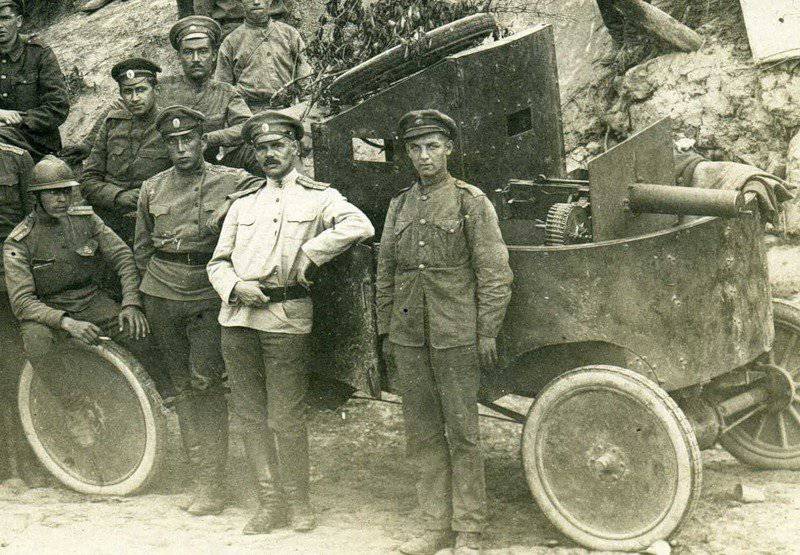
However, neither the increase in production, nor measures to improve the maintenance and repair of machine guns did not allow to fully meet the needs of the troops. General Belyaev, Assistant Secretary of War 22 of August 1915, wrote: “One of the issues that have not received any satisfactory resolution so far is to provide part of the troops with machine guns. When the enemy not only regiments but also companies are equipped with machine guns - the number of machine guns in the infantry of our army is not enough, but in cavalry is generally negligible ... The reserve battalions do not have machine guns at all. Therefore, in order to train machine-gunners, we had to form a machine-gun spare regiment, but so far it has not been supplied with the necessary number of machine guns. ” Machine guns, like many other types of weapons, had to be massively purchased abroad. However, here, according to Belyaev, "significant difficulties were met." The Allies, using the absence in 1915 of the year, active operations in the West, when the main effort was delayed by Russia, took all possible measures to mobilize their own industry, replenish troops with armaments and create significant reserves. However, they were not in a hurry to share them with Russia.
Despite this, the efforts of the Russian Army Procurement Committee in London placed orders for American and British firms. Thus, General Hermonius, the head of the Committee, concluded an agreement with the Colt Arms company on 10 thousand Maxim machine guns under the Russian patron. The cost of one dust meter was 2362 rubles (“Tula” machine guns were twice as cheap, but they were sorely lacking). Deliveries were due to end in February 1917. However, 10 in October 1916, Hermonius reported that “because of the non-execution of the plant” only 6 thousand machine guns were ordered - for the Colt the order was very laborious and was not fully implemented.
In the spring of 1915, the Colonel Golevsky Russian military agent in the United States entered into an agreement to supply thousands of Colt machine guns. 29 January 1916, Hermonius reported that they had signed a contract with Marlin to supply 12 thousand Colt machine guns converted to Russian cartridge. Deliveries were due in May-September 1916. September 28 signed an agreement to purchase more 3060 machine guns.
At first, Vickers could only supply machine-gun belts. The release of machine guns commissioned by the Russian army began only after the British army lowered its own orders for the production of heavy machine guns, that is, since the spring of 1917. Of course, there were cases of fraud, but only the qualifications and caution of the representatives of the Russian military department made it possible to avoid placing orders in dubious firms.
In such conditions, replenishment of armament due to repaired and serviceable captured machine guns turned out to be a good help. The most widely used were the Schwarzlose Austrian machine guns - in 1914 in Galicia they were taken in significant numbers, in addition, in the summer of 1916, during the Brusilov breakthrough, 1795 German and Austrian machine guns were captured. Russia from the allies also received proposals on the Schwarzlose. In May 1916, the French offered 60 machine guns - as it turned out, the Serbian army simply got rid of these machine guns, and only 50 machine guns were suitable. From France, in September 1916, a thousand ribbons were sent to the Schwarzlose. In Russia, in order to supply ammunition for captured machine guns and rifles, they began the production of Austrian cartridges, but they could not do this to a sufficient extent, so they began to remake the captured weapons under the Russian cartridge. Naturally, captured armies were also used by other armies - for example, the German Reichswehr willingly used Lewis machine guns captured from the British.
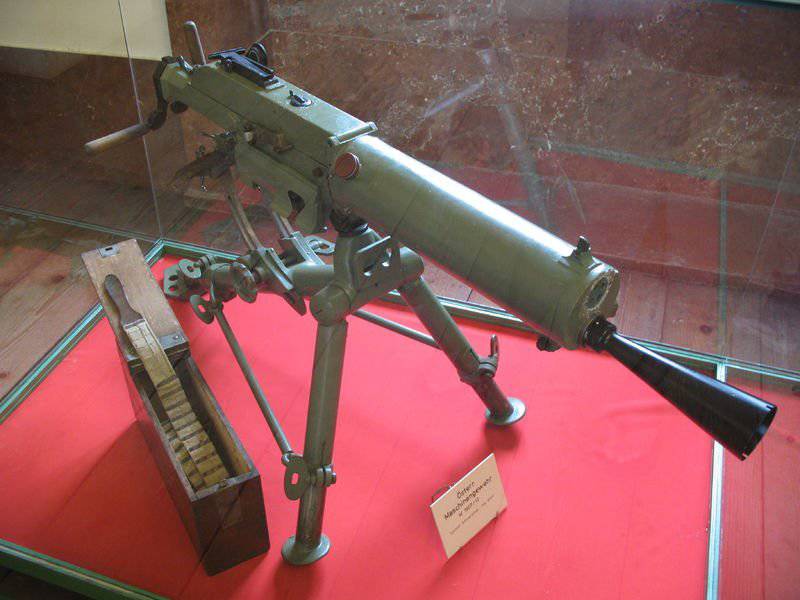
The increase in deliveries made it possible to increase the staff of Maxim's machine-gun teams to 12 machine guns (from the current 8). In August, 1915 launched the formation of the Colt’s machine-gun teams. At first, the 4 machine-gun staff was formed, and from August of the following year it was increased to 8 (in 1916, the second spare machine-gun regiment was formed to train the Colt teams).
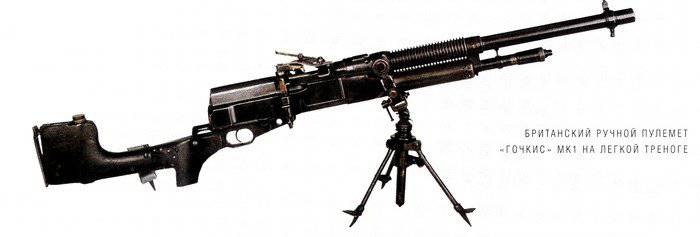
On 1 February 1916, three Russian fronts had about 4,4 millions of fighters and the following number of machine guns: Northern - 132 of the Colt machine gun, 1243 of the Maxim machine gun, 37 of captured machine guns and Gochks 2 machine gun; Western - 204 machine gun "Colt", 2411 machine guns "Maxim", 234 captured machine guns; Southwestern - 271 machine gun "Colt", 1724 machine gun "Maxim", 604 captured machine guns. Guns “Hotchkiss” on the Western and South-Western fronts were absent.
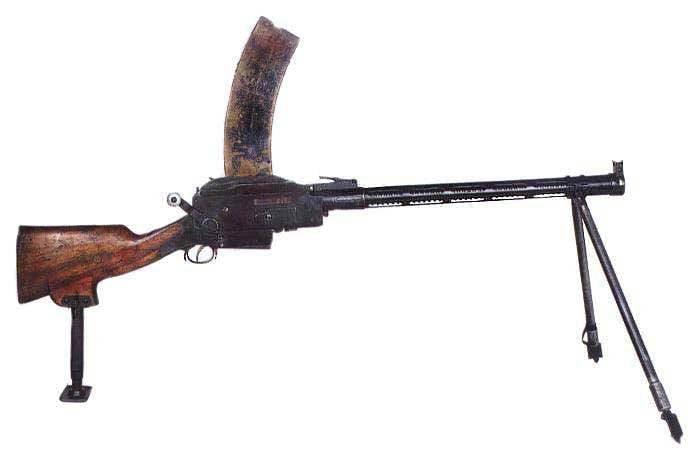
On 1, January 1917 of the year on the fronts was: Northern - 355 machine guns "Colt", 2553 machine gun "Maxim", 70 captured machine guns and 162 machine gun "Madsen"; West - 690 machine guns "Colt", 9660 machine guns "Maxim", 175 captured machine guns and 40 machine guns "Madsen"; Southwestern and Romanian - 687 machine guns "Colt", 4342 machine gun "Maxim", 99 captured machine guns, 133 machine guns "Madsen".
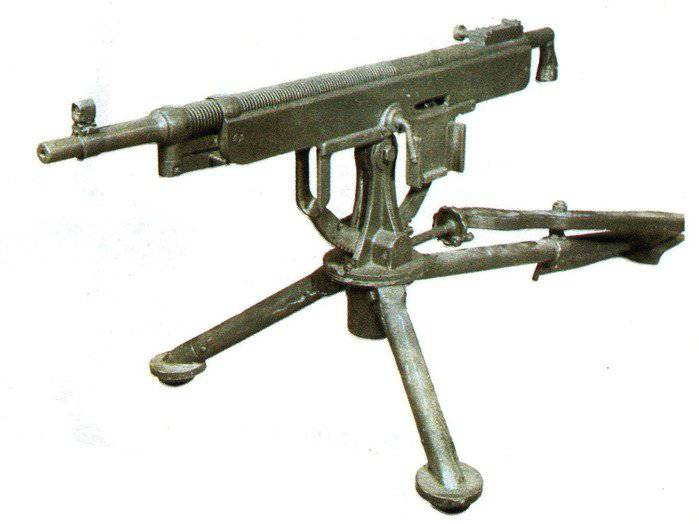
1 March 1917 of the year on four fronts were: 2433 machine guns "Colt" (6732 staff), 10793 machine guns "Maxim" (with 19032 staff), 1451 trophy machine gun. Note that in the Russian army during the war, the Colt machine gun was the second after the Maxim, the number of teams was slightly lower than the number of Maxim’s teams.
The need for light machine guns for cavalry, infantry, "river armored units and aeronautic vehicles" forced them to return to the "Madsen" troops, but they were worn out and few in number. 11 March 1915 in London, Lieutenant General Yermolov signed a contract with the Belgian Society of Automatic Weapons, which operated in England for the supply of a thousand Lewis machine guns with tripods. The cost was 1894 rubles per unit (cheaper than the Maximov). Delivery was to be realized before the end of the year. But until 1 in January, 1916 put only 400 machine guns. At this time, the British government "agreed to cede" to Russia its own orders for the easel "Colt" and "Maxim" and the manual "Lewis". In the USA, at the plant of the company Savage, they placed an order for 10 thousand Lewis machine guns for British ammunition. The surrender was supposed to take place until December 1915 of the year, but here too the execution was delayed. The British company "Birmingham Small Arms Company" executed an order for 1,2 thousand Lewis machine guns under Russian ammunition.
In July, the Russian colonel Ignatiev, a military agent in Paris 1916, asked General Joffre about the transfer of Hotchx machine guns to 500. He hoped that the data would be used in the Caucasus, where only Lebel rifles were in service with the troops. But Nashtaverh recognized this purchase as "undesirable". Ignatiev 16 August 1916 of the year telegraphed to GAU, that it is possible to order "50 thousand Shosh machine-guns". Nashtaverh found such an order necessary. Ignatiev 30 December wrote: “The French government makes a promise to give Russia from 01 November 1916 of the year to June 1917 of the year at least 600 of Shosh’s CSRG machine guns which are provided with cartridges of the 1886 model of the year”. The French side could not withstand these delivery dates and naturally could not stand it. Until the middle of 1917, 2 416 316 rounds of ammunition for the Shosha machine guns arrived in France, 738 235 830 units from the Lewis arrived in England (ordered by 800 million).
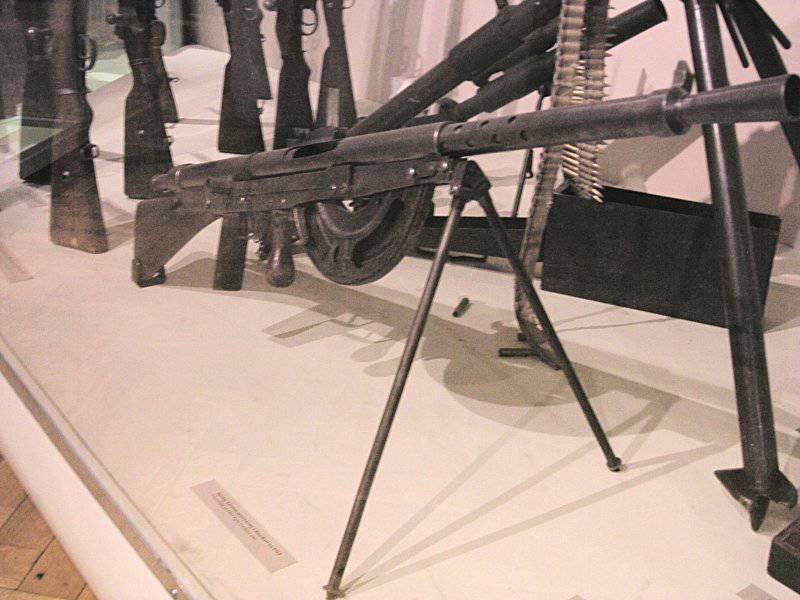
In total, three machine-gun systems (Vickers, Maxim, Colt) and three systems of light machine guns (Hotchkiss, Shosh, Lewis) were ordered abroad. The peak of the supply of foreign machine guns fell on November 1916 of the year - 2,2 thousand systems. Until the middle of 1917, deliveries were made as follows: in 1914, 828 domestic machine guns and 0 from allies; in 1915, 4251 and 500, respectively; in the 1916 year - 11072 and 628; in the 1917 year - 11420 and 7462. Total 27571 domestic machine guns and 8590 from allies.
At 1917 year, the Headquarters set the following need: “Maxim” - 13 thousand at a time and 7,2 thousand during the year, easel machine guns “Colt” - 10 thousand, and also 110 thousand guns. The monthly requirement was determined in 4430 machine guns (equal to the number that they were going to supply the entire army with in the 1914 for fighting the war).
Total in different countries was ordered and delivered.
In France: “Shosh” machine guns ordered - 50 thousand, released before January 01 1917 - 700, released in January-June 1917 - 2500 pcs.
In the USA: “Maxim” machine guns were ordered - 10 thousand, until 01 in January 1917 was not released, released in January-June 1917 of the year - 53 pcs .; Colt machine guns ordered - 17785, released before 01 January 1917 of the year - 5175, released for January-June 1917 of the year - 9620 pcs .; machine guns "Lewis" ordered - 10 thousand. Released before 01 January 1917 of the year - 1114, released in January-June 1917 of the year - 8657 pcs.
In England: Lewis machine guns ordered - 1200, released before 01 January 1917 of the year - 741, released for January-June 1917 of the year - 200 pcs .; Hotchkiss machine guns ordered - 500, until 01 January 1917 was not released, released for January-June 1917 - 499 pcs.
In total for 1917 a year from the USA 9,6 thousand “Lewis” and from England 1860, from France 6,1 thousand machine guns “Shosh” and 540 “Gochkis” were received. Before 1917, only 10 was received from 128 thousand of ordered Vickers, and for January-October 1917 - 900 units. in general, for 1917 a year, the number of machine guns almost doubled compared to 1916 a year, it was mainly due to foreign supplies. Abroad for machine-gun teams were purchased binoculars, range finders, and also pack seats.
As a result, Russian machine-gun armament turned out to be very variegated, both with respect to calibers and with systems. In the statement for November 1916, of the Petrograd warehouse of firearms, there are: “3-linear combat rifle-pointed bullets with landing on 2 lines, 3-linear combat rifle-pointed bullets with landing of bullets on the 3 lines, ... German combat rifled pointed rifles, .., for combat bullets on the 0,303 lines, ... combat germany rifle pointed, .., forged, bullets on 0,303 lines, ... combat rifle pointed German ones, .., forged, bullets on 3 lines, ... combat rifle pointed German ones, .., forged, bullets on 3 lines, ... combat rifle pointed German ones, .., forged, bullets on XNUMX lines, ... combat rifle pointed German ones, .., forged, bullets on XNUMX lines, ... combat rifle pointed German ones, ... blunt rifle Austrian, and with explosive bullets, .. to Lewis machine guns English caliber XNUMX ... French military rifle caliber XNUMX, .. American-made XNUMX-ling fighting, .. XNUMX-ling fighting with deep capsule and incendiary bullets "(The latter used to destroy the aircraft). This diversity has increased during the Soviet-Polish and civil wars.
New production of machine guns could not be deployed. Izhevsk and Sestroretsky weapons factories did not have the appropriate equipment, and private industry did not have the necessary precision of production and experience. Proposals for the production of machine guns "Maxim" received in January 1916 of the year from the joint-stock company "Machine gun", engineer Semenov and industrialist Tereshchenko did not provide anything and remained without any consequences. The construction of a new plant in Tula, started in 1915, was slow, and stopped in 1918 due to insufficient funding (the plant was later built, thus putting the beginning of the TMZ). At the end of 1915, the Danish Arms Syndicate received a proposal to build a plant in Russia to produce Madsen light machine guns. Also, the British offered to build a plant for the production of "Lewis", but the choice was stopped on the version of the Danes, who promised the emergence of a modern weapons enterprise. The plant was laid in Kovrov in August 1916 of the year. 28 January 1917 of the year between the military department and the Joint-stock company created around the plant signed an agreement on 15 thousand Madsen machine guns, but the matter was limited to the release of an experimental batch. In March 1918, all work stopped. Later, the Kovrov Plant was completed, and it became one of the main centers for the development of Russian weapons.
In Russia, to overcome the shortage of machine guns failed. If by the beginning of the First World War, one infantry division in the Russian army accounted for 32 machine guns, and the infantry division of the British, French and German armies was for 24 machine guns, then by the end of the war the infantry division of the Russian army had 72 machine guns, the German army had 324 ( of which 216 light machine guns), French - 574 (441), British - 684 (576).
Based on: S. Fedoseev - Machine Guns in the First World War
Information